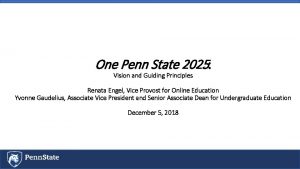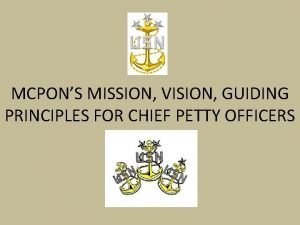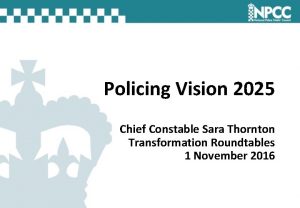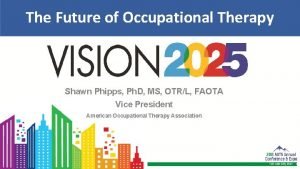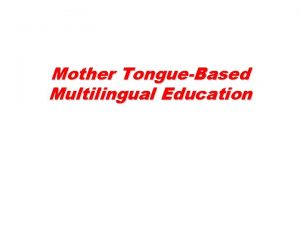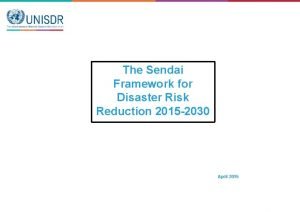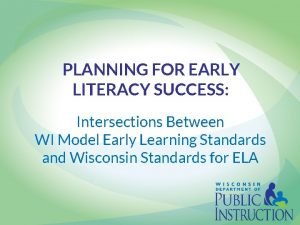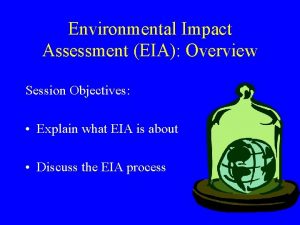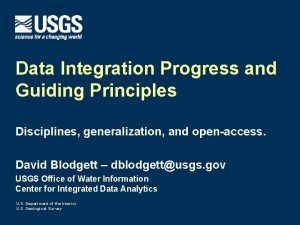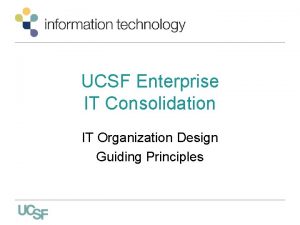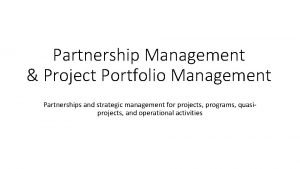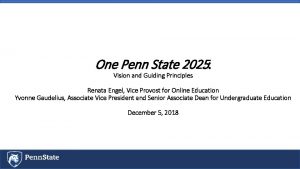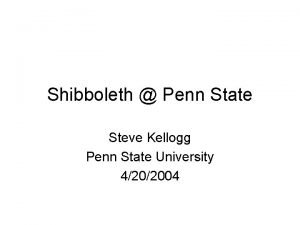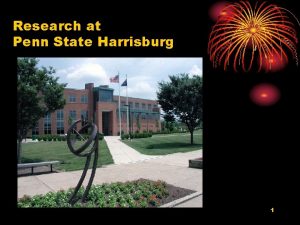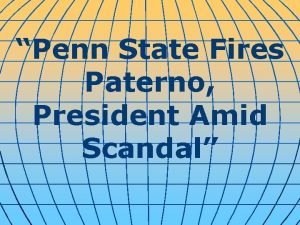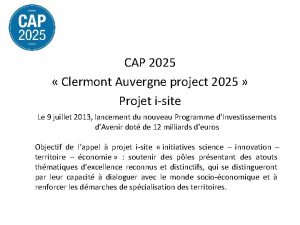One Penn State 2025 Vision and Guiding Principles















- Slides: 15

One Penn State 2025: Vision and Guiding Principles Renata Engel, Vice Provost for Online Education Yvonne Gaudelius, Associate Vice President and Senior Associate Dean for Undergraduate Education December 5, 2018

The Vision: One Penn State 2025 builds on our strong traditions of working as one university to provide world-class education and drives us to be a more integrated, flexible, and responsive institution. By 2025, seamless online access to curricula and processes will be embedded in every part of Penn State across the Commonwealth, enabling us to become a 24/7/365, diverse and inclusive institution. One Penn State 2025 represents a fluid, personalized, and collaborative environment that enables students, faculty, and staff to achieve their goals regardless of their location in the world.

Conducted visioning exercises and provided forums (600 + individuals participated); Settled on five areas that impact the educational experience: business processes, curricula, timely content and modalities, lifelong engagement, and support systems Fall 2016 Provost charged the taskforce to review trends, leverage success of World Campus and recommend a vision and framework for the future of online learning at Penn State 2017 2018 Engaging in deeper discussions of the Guiding Principles and developing approaches to pursue projects and the appropriate structure to support and coordinate activities in each area

The Guiding Principles for One Penn State 2025 • Guiding Principle 1: Provide a Seamless Student Experience. In 2025, Penn State will provide students with a seamless, mobile student experience in all student interactions with the institution, whether this be the admissions or enrollment processes, the process of taking courses, co-curricular learning, or full access to the curricula and support services offered across the University. • Guiding Principle 2: Achieve Curricular Coherence. In 2025, Penn State will have one curriculum across each degree, minor, and certificate program and will offer only one version of each program. Strong disciplinary and interdisciplinary communities and multiple and flexible models of course taking will form the basis of this transformation. • Guiding Principle 3: Design Relevant and Responsive Programs. In 2025, Penn State will offer degrees and programs with learning outcomes defined by disciplinary communities and contemporary needs while also offering flexibility in achieving these outcomes via multiple pathways. • Guiding Principle 4: Engage Learners Throughout Their Lifetimes. In 2025, Penn State will engage learners throughout their lifetimes with content that is timely, topical, and relevant to their personal and professional wellbeing. • Guiding Principle 5: Achieve the Highest Level of Efficiency of University Resources. In 2025, Penn State will leverage digital resources and align faculty, academic, and administrative resources to strengthen learning, research, and student support opportunities, thereby achieving greater institutional efficiency to address equity of, access to, and affordability for a high-quality Penn State education.

The Path Forward Identify key stakeholder groups to ensure that each guiding principle will benefit from focused discussion; prepare presentation to facilitate getting input Given the vision and guiding principles, pursue next steps with each group— considering the opportunities, the questions still to be explored, and the pace of adoption. Building on the input from stakeholders, create an approach to define and further refine actionable strategies as an extension of the guiding principles; present to the Transforming Education Steering and Executive Committees will have all the pieces (vision, guiding principles, potential strategies) on which to act.

Stakeholder Groups • President’s Council – represents every facet of the university and considers the broad institutional impact and the interconnectedness of actions in decision-making • Academic Leadership Groups – represent the principle authorities for the education of students in their college or campus, including unit operations, student experiences, collaborations across academic units, faculty expectations, and faculty support • Shared governance – distributed across multiple governing bodies and which have a range of responsibilities that include legislative, consultative, and forensic in areas that impact faculty and students • Student Leadership Groups – distributed across multiple structures, but each with a focus on a particular portion of the student body • Specialty Groups – formal networks which address common functions that are distributed across the university (Financial Officers, Enrollment Management, Human Resources Strategic Partners, Information Technology) or informal groups which provide unique perspective (Alumni Association members, Advisory Board members, clients and community members)

Guiding Principle 1: Provide a Seamless Student Experience. In 2025, Penn State will provide students with a seamless, mobile student experience in all student interactions with the institution, whether this be the admissions or enrollment processes, the process of taking courses, co-curricular learning, or full access to the curricula and support services offered across the University. Longstanding: E-learning cooperative (now Digital Cooperative) provides a platform and process for students to take courses offered at another campus. Resident students can enroll in open seats (10 -days prior to semester) in many World Campus courses as part of their regular enrollment. Underway: Exploring the creation of a digital integrative portal that can serve as a single sign-on and one-stop access to transactional functions. Developing approaches to streamline student services that respond to student requests with triaged and tiered approach. Possibilities for the Future: Review policies and procedures for out-of-class activities to create flexibility across campuses. Develop long-range enrollment planning that accounts for greater student mobility throughout degree completion.

Guiding Principle 2: Achieve Curricular Coherence. In 2025, Penn State will have one curriculum across each degree, minor, and certificate program and will offer only one version of each program. Strong disciplinary and interdisciplinary communities and multiple and flexible models of course taking will form the basis of this transformation. Longstanding: Underway: Possibilities for the future: Shared curriculum via the 2006 Common program (learning) outcomes Design curriculum with the intent to enable greater flexibility for Uniform Course Abbreviation initiative supported program assessment and subsequent degrees or for greater phased out duplicative discipline accreditation processes. mobility for students. abbreviations and courses. BS Health Policy and Administration 2011 Faculty Senate legislation faculty across multiple campuses are enabled students at any Penn State designing the curriculum, coordinating campus to complete the requirements academic resources (e. g. , internships), for academic minors and certificates. working with one certification, faculty support for teaching, etc. together with one vision for the program.

Guiding Principle 3: Design Relevant and Responsive Programs. In 2025, Penn State will offer degrees and programs with learning outcomes defined by disciplinary communities and contemporary needs while also offering flexibility in achieving these outcomes via multiple pathways. Longstanding: An array of minors span concentrated areas of study as well as opportunities for students to augment degree programs with a focus that is outside their direct discipline. Underway: Micro-credentialing in timely workforce topics (technical skills, business acumen) to supplement degree programs. Possibilities for the Future: Create and accommodate alternate forms of engagement (3 -credit courses offered as three 1 -credit courses). Create alternative curriculum Credit courses designed and delivered structures or offerings for self-paced Accelerated summer schedule, such as in a 7. 5 week format to facilitate learning, or concentrated delivery ‘Maymester’ to facilitate academic learners taking back-to-back courses in (e. g. , over winter break). progress and concentrated studies. a single semester.

Guiding Principle 4: Engage Learners Throughout Their Lifetimes. In 2025, Penn State will engage learners throughout their lifetimes with content that is timely, topical, and relevant to their personal and professional wellbeing. Longstanding: Underway: Possibilities for the Future: OLLI (Osher Lifelong Learning Institute) A portal (ATLAS) recently launched by Create fee structures that incentivize at two campuses provides hundreds of Penn State Extension provides an array collaboration and are sustainable, and courses/year to senior learners. of content from webinars, to papers, consider subscription services, pay-asand online short courses reaching the you-go options. agricultural sciences community with Penn State Alumni Association relevant and timely content. provides educational programs (tours), Provide access to single courses, single Huddle with the Faculty, etc. lectures to alumni as refreshers or to support their current needs. Repackaging credit content for noncredit use, e. g. , law education. Executive programs provide a blend of non-credit content for corporate training.

Guiding Principle 5: Achieve the Highest Level of Efficiency of University Resources. In 2025, Penn State will leverage digital resources and align faculty, academic, and administrative resources to strengthen learning, research, and student support opportunities, thereby achieving greater institutional efficiency to address equity of, access to, and affordability for a high-quality Penn State education. Longstanding: A common learning management system (LMS) was selected and adopted for curricular offerings. Resident students can enroll in open seats (10 -days prior to semester) in many World Campus courses as part of their regular enrollment. Underway: Adopted an enterprise-wide advising platform and recently added support for data analytics capability to support student success. Possibilities for the Future: Exploring a common or coordinated content management systems to support shared curriculum and dualpurpose of course content. Recently launched an integrated Create lifelong digital access to Pen career system for 37 Penn State career State (identity services). units leading to a more unified, seamless student, alumni, employer and staff experience.

Panelist Perspectives: Goals, Progress, Challenges, Successes Guiding Principle 2: Achieve Curricular Coherence Maggie Slattery, Assistant Dean and Director, General Education Guiding Principle 3: Design Relevant and Responsive Programs James Nemes, Chancellor and CAO, Penn State Great Valley Guiding Principle 4: Engage Learners Throughout Their Lifetimes Jeff Hyde, Acting Associate Dean and Director, Penn State Extension

Roundtable Discussion - Curriculum 1. In the past 15 years, we have created disciplinary communities, coordinated common course descriptions, significantly reduced duplicate minors, and provided greater access to minors, revised general education to include integrated and multidisciplinary content. With each of these efforts, we took a step toward greater curricular coherence. What are the next steps or the structures we need to create that will provide another step on the path to curricular coherence? 2. In the past 10 years, select departments have offered MOOCs, others have explored microcredentialing, and the university has streamlined the process for creating credit certificates. Each of these efforts have provided pockets of alternative and timely content. As we consider flexible curricula, alternative and perhaps accelerated paths, what steps should we take to foster greater innovation and collaboration across academic and administrative units to explore dual use and efficiency of content development to enhance degrees?

Roundtable Discussion – Your University for Life For the past 125 years, continuing education has had a role at Penn State. That role has evolved. Our history and strength in this area could help us connect to learners for a lifetime. Earn a degree with us and connect for a lifetime of education. As we explore the concept of “Penn State - your university for life”, what are the ways we expect learners to engage in their education throughout their lifetimes, and how do academic units support that ongoing education? What are the characteristics of ‘your university of life’ that would transform the way we engage with lifelong learners?

Thank you. Dawn Blasko, Executive Director, University Faculty Senate Clark Brigger, Executive Director, Undergraduate Admissions, Office of Undergraduate Education Raymonde Brown, Associate Dean for Undergraduate Programs, College of Nursing Brian Cameron, Associate Dean for Professional Programs, Smeal College of Business Penny Carlson, Assistant Vice President and Executive Director for Academic Services and Assessment, Commonwealth Campuses David Christiansen, Chancellor, Penn State York Sonia De. Luca Fernandez, Assistant Vice Provost for Educational Equity Andrea Dowhower, Associate Vice President, Student Affairs Renata Engel, Interim Vice Provost for Online Education Bill Fritz, Director of Admissions and Financial Aid, World Campus Yvonne Gaudelius, Associate Vice President and Senior Associate Dean, Office of Undergraduate Education Jody Heckman, Budget Director and Special Assistant to the Executive Vice President and Provost, Office of the President Melissa Kunes, Senior Director for Student Aid, Office of Undergraduate Education Deena Levy, Assistant Research Professor and Instructional Consultant, Schreyer Institute for Teaching Excellence Jeff Smith, Associate Vice President of Operations, Outreach and Online Education Andrew Reisinger, Director for Budget and Reporting, University Budget Office Martin Trethewey, Director of Global Engagement Network, Global Programs Albert Lozano-Nieto, Professor of Engineering, Penn State Wilkes. Barre Karen Pollack, Assistant Vice Provost for Online and Blended Programs, Outreach and Online Education Joseph Salem, Associate Dean for Learning, Undergraduate Services and Commonwealth Campuses, University Libraries Jennifer Sparrow, Senior Director for Teaching and Learning with Technology, Enterprise Information Technology Michael Verderame, Senior Associate Dean, Graduate School
 One penn state 2025 vision
One penn state 2025 vision Mvgp
Mvgp Policing vision 2025
Policing vision 2025 Shawn phipps
Shawn phipps Nlcil vision 2025
Nlcil vision 2025 Nlcil vision 2025
Nlcil vision 2025 Asean tourism strategic plan
Asean tourism strategic plan Graphic organizer with the aims of la liga filipina
Graphic organizer with the aims of la liga filipina Guiding principles in teaching and learning mtb-mle
Guiding principles in teaching and learning mtb-mle Sendai framework guiding principles
Sendai framework guiding principles Wmels performance standards
Wmels performance standards Introduction of ncf 2005
Introduction of ncf 2005 Eight guiding principles of eia
Eight guiding principles of eia Integration guiding principles
Integration guiding principles Org design guiding principles
Org design guiding principles Project portfolio management guiding principles
Project portfolio management guiding principles
